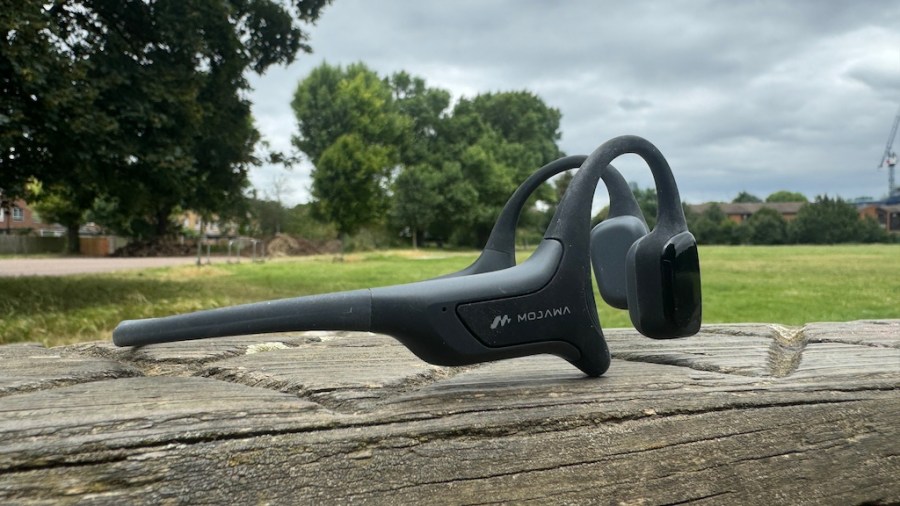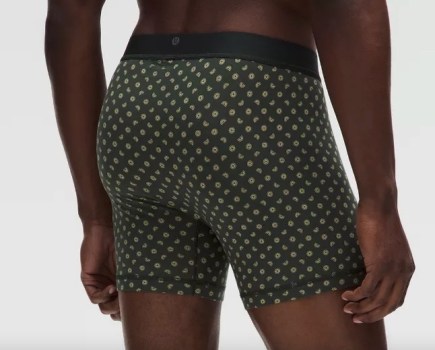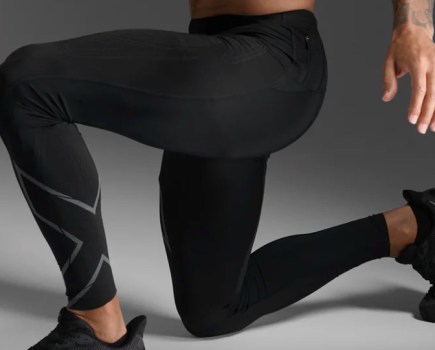These Mojawa HaptiFit Terra headphones promise AI coaching, heart rate tracking and music storage, but unfortunately they fail to deliver on most fronts.
The latest headphones from Shokz’ rivals Mojawa, the Mojawa HaptiFit Terra, aim to do much more than simply soundtrack your workouts. With haptic controls, Bluetooth and MP3 playback, built-in heart rate monitoring and AI coaching in the partner app, these bone conductors are part headphones, part fitness tracker, part smart coach. But are they worth the £279 premium price tag? I hit the road, the pool and the gym to find out.
Men’s Fitness verdict
The tracking and coaching features seem promising but fall short in practicality. The sound quality struggles in the pool, and controls are overcomplicated, making the high price hard to justify.- MP3 and Bluetooth playback
- Good comfort and secure fit
- No charging case
- Heart rate lacks accuracy
- Complicated controls
How we test the best running headphones
We tasked Kieran Alger, one of our top professional fitness product testers, with putting these headphones through their paces. In practice, that meant seeing how they performed in all sorts of active environments, from the gym, to the pool, to the great outdoors. Specifically, Kieran assessed traits like sound quality, comfort, and additional tech/features.
Mojawa HaptiFit Terra features, design, fit and controls
The Mojawa HaptiFit Terra follows the bone conduction headphone blueprint with vibrating transducer pads that hook over your ears, sit on your cheek bones and leave your ears open to the world around. The pads are connected by a titanium alloy neckband that keeps things relatively light. But at 35g they’re chunkier and heavier than the 27g Shokz OpenSwim Pro.
The bone conduction pads feature capacitive and pressure-sensing haptic control panels that light up. The right pad also features an optical heart rate sensor and there’s phone-free MP3 and Bluetooth audio modes. All trying to elevate these above regular bone conductors.
Overall, they’re well built with an IP68 rating for full dust- and waterproofing. They’ll survive in up to two metres of water for up to two hours. So that’s swimming ticked.
I found them comfortable to wear, even for extended workouts up to two hours. They fit well, with good security from the ear hooks. However, like all bone conductors, there’s some bounce when you start jumping off boxes and doing more dynamic drills. The neckband design also isn’t the best for bench work.
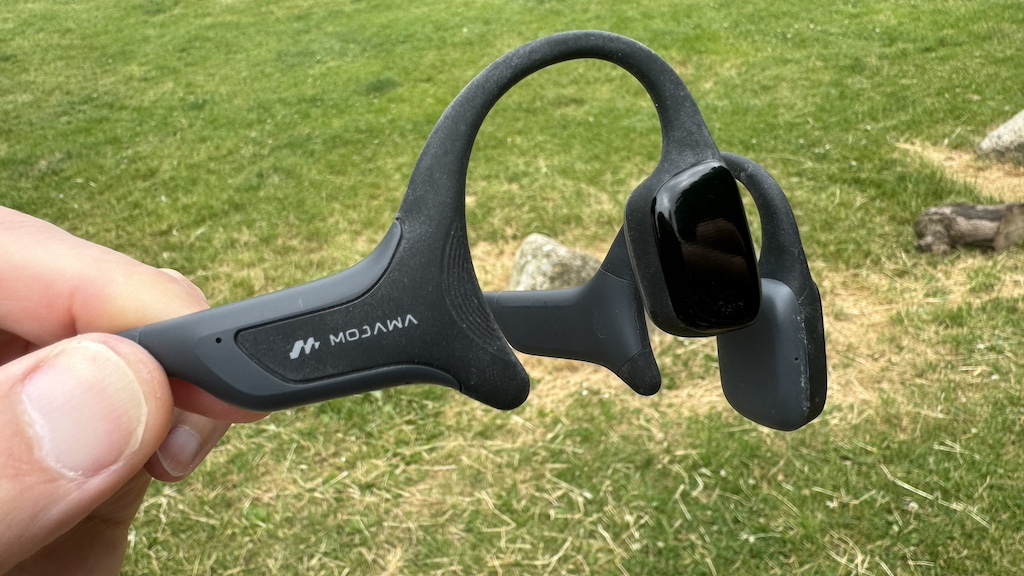
The two sets of controls are less convincing. There are 3D pressure-sensitive haptic controls on the left pad and Tap Controls on the neckband. The combination of firm/light presses and holds takes some learning and the techniques for changing volume are very fiddly. The response on the Tap Controls, used to switch between MP3 and Bluetooth mode, is also hit and miss and you can’t toggle between the two playback modes in the app either.
On connectivity, they feature Bluetooth 5.2 with support for two simultaneous pairings. That makes it easy to switch from phone to laptop. In Bluetooth mode, they occasionally dropped connection during my training sessions. Not often but often enough to be frustrating.
There’s 32GB of music storage – enough for around 8,000 songs and getting your music onto the headphones is drag-and-drop simple, though you’ll need to own music files in the first place and – like the Shokz OpenSwim Pro – you’ll need to connect to a laptop to do it. Helpfully, unlike the Shokz, the cable is Mac compatible.
Sadly, the HaptfFit Terra’s built-in music player also lacks any kind of playlist management, you’re just dumping tracks into one big list. Though there is a shuffle and loop mode which is one step on from Shokz.
Fitness smarts
The Mojawa Haptifit Terra carries a hefty price tag. You’re paying for the heart rate tracking and coaching smarts that other headphones don’t offer.
Now, Mojawa isn’t the first brand to stick an optical sensor in headphones. Sennheiser recently did it with the Sennheiser Momentum and JBL did it way back. But in my experience it never improves on the accuracy of the optical sensor most people already have on their wrist and certainly can’t match a chest strap. And that’s true here, too.
In my tests, the heart rate accuracy was very poor. My one-hour run at an average 7min/km pace registered an average heart rate of 65 beats per minute (bpm). That’d be superhuman. My Polar H10 chest strap shows it was closer to 116bpm. During the run I could see Mojawa locking my heart rate at 53bpm for long periods. On another interval workout it locked at 79bpm.
The Mojawa HaptiFit Terra also doesn’t broadcast heart rate, so you can’t even use it instead of a chest strap. So while it’s a nice idea, headphone heart rate isn’t a feature I’d pay a premium for.
What about the coaching smarts? In theory, the partner app serves up automatically generated (allegedly AI-powered) exercise plans for running. That starts with an initial 15-minute run test. However, despite completing multiple runs, I was unable to start the evaluation. The Mojawa kept insisting there was no valid running data to set my baselines. So I have no idea how good or bad the plans are.
In any case, if you’re brand new to running this might be a useful feature. If you run already and own a Garmin, Polar and COROS, you already have tools that can do this. Not to mention, if you’re already invested in another platform, this isn’t good enough to make the leap. Another bugbear: the Mojawa training app doesn’t connect to any third party apps so you can’t share training data to services like Strava.
I did enjoy the instant audio and vibrating haptic feedback that help you target things like pace, cadence and heart rate.
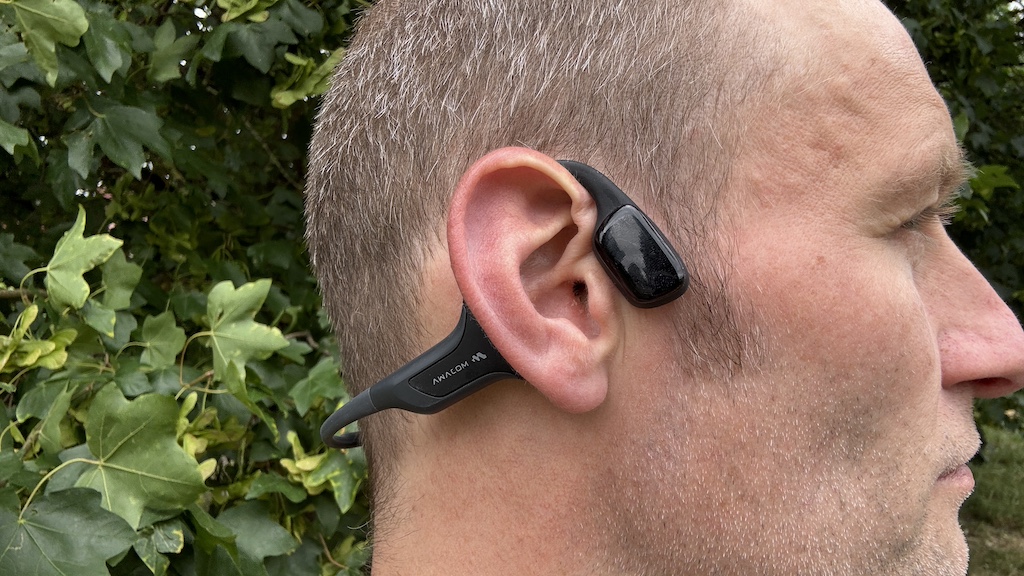
Mojawa HaptiFit Terra sound quality
You don’t buy bone conduction headphones for the very best sound quality and generally in and out of the water, the Mojawa HaptiFit Terra serve up standard audio performance for bone conductors – overall a bit thin, lightweight and lacking the bass and big top volume to rival regular in-ear buds.
There are four different sound modes: balanced, swim, vocal and enhanced. There’s not much to choose between them out of the water. The enhanced mode boosts the volume but in noisier situations, like running by a busy road, my music was easily drowned out. Increasing the volume also caused more cheek bone vibration than I found with the Shokz OpenSwim Pro.
In the water, I had real struggles. In MP3 mode the audio kept cutting out everytime I pushed off with my head in the water. Almost as though the haptic controls were being triggered. I didn’t get a single lap of the 25m pool with full audio. For the fleeting moments where I did have sound, it was passable. Not as good as the Shokz OpenSwim Pro (see deals below) but if it worked consistently, it’d be good enough to provide some in-pool entertainment.
Battery life
On paper the Mojawa HaptiFit Terra claims eight hour’s workout time at 75% volume. The rapid charge offers 1.5 hours from five minutes on the plug and I found the auto on/off great for sparing precious battery life.
In my tests, on average, a one-hour run in Bluetooth mode with volume at 100% burned 20%. In MP3 mode a one-hour swim burned 20%.
Should you buy the Mojawa HaptiFit Terra headphones?
The Mojawa HaptiFit Terra is a classic case of an ambitious product trying to do too much and unfortunately missing the mark. The tracking and coaching features look exciting on paper, but they don’t work well enough to be genuinely useful. You’ve probably got better training tools on your watch already. The MP3 sound struggled in the pool and the fancy haptic controls are overcomplicated. That makes it hard to justify the pumped up price. Take away the sketchy heart rate monitor and the temperamental AI coach and you’d have a set of swim and fitness headphones that are generally sound. If that’s what you’re after, the Mojawa RunPlus (buy now) offers all that – just cheaper.

